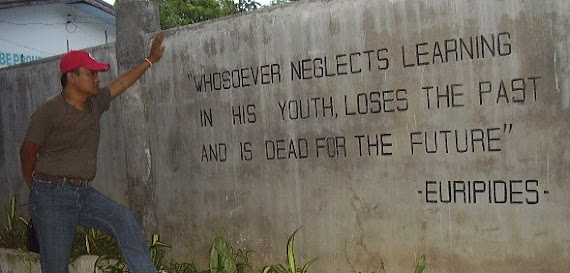A judge is expected to stay fair, firm and cunning like the Teenage Mutant Ninja
Turtles as a team. All the judges in the land are privy
to Rule 1.03 of the Code of Judicial Conduct which states that, “A judge should be vigilant against any
attempt to subvert the independence of the judiciary and should forthwith
resist any pressure from whatever source intended to influence the performance
of official functions.” If judge
so-and-so is bias toward this-and-that influential political faction and
patron/s, to whom would the non-partisan and impoverished citizens rely and trust
in order to get equity and justice?
Without
accusing anybody, a corrupt judge for me is not only the one who trades rulings
for cash. Aside from cash, it could also be in the form of perks or material
benefits in exchange of his/her judgement. But nonetheless, corruption in the judiciary may come in subtle but
equally destructive form. When he or she
does these things, big or small, petty or grand, intentionally, though what
motivates him/her is another issue, she or he still commits a crime. But over
and above, we must dare ourselves sue them for anything short of this is trial by publicity. Or mere politicking.
Specifically,
I was told by my lawyer friends that a dishonest judge in technical terms can ignore evidence,
twist rules and procedure, obstruct the record, retaliate, manufacture facts or
ignore others, allow infirm claims or dismiss valid ones, deny admission of
evidence prejudicial to the favored party, suborn perjury, mischaracterize
pleadings, engage in ex parte communication and misapply the law, among other
things. Do our judges in mind guilty in any of these? That I do not personally know. Positively put, the most honorable judge whenever s/he decides for a case, s/he is solely accountable to the Law and to God and not to the motives of any mortal.
It
was then President Joseph Estrada in his June 30, 1998 inaugural speech as the
13th Philippine President referred to those judges as "hoodlums in robes”.
All I know is there’s a 2005 survey among Philippine lawyers and judges
nationwide showed that 49 % knew of a case in which a judge was bribed but said
they failed to act because they could not prove the charges. In 2008, the
Berlin-based Transparency International has also ranked the Philippine
judiciary as among the most corrupt in the world and on the same level as the
justice systems in Rwanda, Russia and Nepal. The situation is alarming. And it
is more alarming if politicians make them just pawns sacrificing the integrity
of the whole justice system. Having mentioned such, immediately we remember Chief
Justice Renato Corona for allegedly amassing ill-gotten wealth as reported in this news item and all those nameless and faceless hoodlums in robes.
Aside
from the Supreme Court on swift administration of justice against erring judges,
the citizenry, even at the local level could place their share. The initial
step we should take locally is to establish an independent body (especially composed
of faith-based leaders) as our channel of salvation from judicial corruption. A
province-wide group to encourage attorneys, judges, public officials and the
media to perform their duties with ethics and responsibility, and promote laws
that would discourage them from abusing special privileges. Concerned citizens,
non-partisan groups should be organized and established like those we find in
cyberspace like THIS site and THIS too.
Judges
are our servants and taxpayers pay them to administrate our laws. Aside from being fair, firm and cunning like the Teenage Mutant Ninja Turtles and to move from popular culture to historical characters, like Fathers
Gomez, Burgos and Zamora or Gomburza, their heroism must have a profound effect
on many Filipinos....
-------
(Photo: Indervilla.com)







